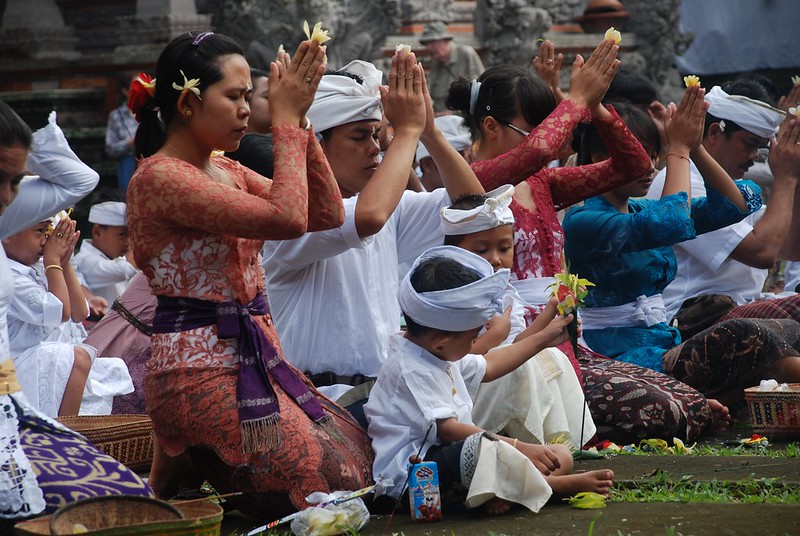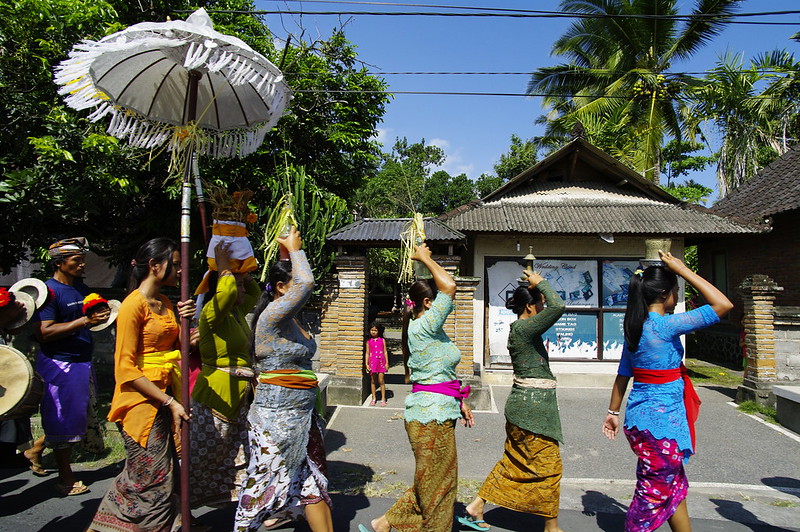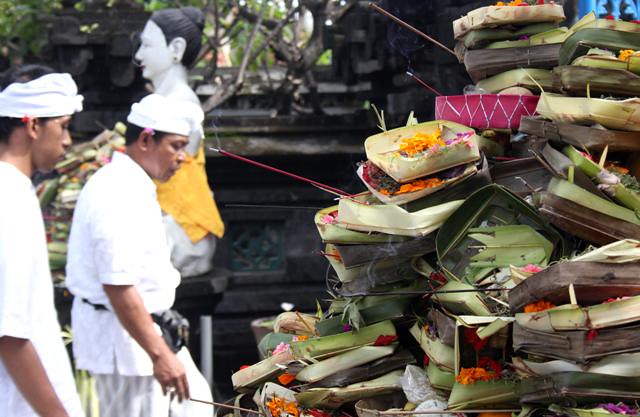Galungan
Bali’s Most Spiritual Festival Celebrating Ancestors, Gods, and the Triumph of Good<
2026/01/20 - 2026/01/30
Galungan is the most important religious festival in Bali, celebrating the victory of good (Dharma) over evil (Adharma) in Balinese Hinduism, and welcoming the return of ancestral spirits to their families.
Twice a year, for ten days, the island is transformed by Galungan—a festival of color, prayer, and family bonds. Based on the 210-day Pawukon calendar, Galungan marks the heart of Balinese Hindu culture, when the spirits of ancestors return to earth and good triumphs over evil. Villages, homes, and temples fill with offerings, music, and the scent of incense, and the “soul” of Bali shines at its brightest. Galungan is the perfect opportunity to experience the true essence of Bali.
As the festival begins, streets and temple gates are lined with penjors—graceful bamboo poles adorned with coconut leaves, fruit, and flowers. The sounds of gamelan, the aroma of roast pork and spices, and the sight of people in white and yellow ceremonial dress carrying offerings to temples and family shrines—all awaken the senses to the spirit and community of Bali.
Main Attractions
Penjor Decorations and Village Transformation
The symbol of Galungan is the penjor, a tall bamboo pole decorated with coconut leaves, rice, fruit, and flowers, erected at every home. The result is a village transformed into a living work of art, with each penjor representing prosperity, gratitude, and prayers for the earth’s bounty.
Temple Ceremonies and Offerings
During Galungan, elaborate rituals are held in homes and temples. Banten (offerings) made from palm leaves, flowers, rice, and fruit are placed at family temples and public shrines to welcome ancestral spirits. The air is filled with incense, and temples come alive with prayer, music, and dance.
Traditional Dance, Music, and Community Gatherings
Villages come alive with performances of Barong and Legong dances, gamelan music, temple processions, and family reunions. Stories and meals are shared, offering a true taste of Balinese culture and hospitality.
Costumes and Decorations
Men wear white shirts and sarongs with udeng (headbands), while women wear white kebaya blouses, colorful sashes, and batik sarongs. Yellow and white symbolize purification and holiness. Homes and temples are decorated with penjors, flowers, and vibrant offerings.
Traditional Food & Drink
Galungan is also a feast for the senses. Lawar (spiced coconut and meat salad), babi guling (roast pig), sate lilit (minced spiced meat satay), and jaja (colorful rice cakes) are served to family and neighbors. The aromas of garlic, turmeric, coconut, and charcoal-grilled meat fill the island.
Cultural and Historical Background
The origins of Galungan lie in Balinese Hindu mythology. According to legend, the tyrant king Mayadenawa once banned religious practice on Bali, plunging the island into fear and chaos. The god Indra descended from the heavens and fought a fierce battle against Mayadenawa’s forces, ultimately ensuring the victory of good (Dharma) over evil (Adharma). This “day when good triumphs over evil” is the spiritual core of Galungan.
This myth symbolizes the Balinese value of Dharma (justice and harmony), and Galungan has become a festival celebrating this victory and the return of ancestral spirits. During the festival, Balinese families welcome their ancestors at home and village temples, offering prayers, food, dance, and gratitude. On the tenth day, the festival concludes with Kuningan, when the spirits are believed to return to the heavens.
Galungan is held every 210 days according to the Pawukon calendar, sometimes occurring twice a year. Preparations bring families and communities together as they make penjors, prepare offerings, and clean temples, strengthening bonds across generations and villages. More than just a religious event, Galungan is the embodiment of Balinese identity, harmony with the unseen world, and the spirit of hospitality.
Participant Voices
“Galungan is the day when my whole family gathers. We decorate the penjor and make offerings together. The village feels magical, and I’m proud to teach our traditions to my children.”
Fun Facts
- Galungan is celebrated every 210 days, so it can occur twice a year.
- The festival lasts for 10 days and ends with Kuningan, when ancestral spirits return to heaven.
- Each penjor is handmade, and every decoration carries a meaning of prosperity or gratitude.
- Babi guling and lawar are classic Galungan dishes, made in nearly every household.
Festival Dates
Galungan is held across Bali every 210 days. Walk beneath the penjors, join temple ceremonies or family meals, and experience the spirit and festive air of Bali’s most cherished festival.
The event schedule is subject to change. Please check the official website for the most up-to-date information.
Information
| Name | Galungan |
| Country | Indonesia |
| Area | Bali |
| Date | 2026/01/20 - 2026/01/30 |
| Link |
Upcoming Festivals
Whirling Dervishes Festival Turkey
A Mesmerizing Dance of Divine Love
2025/12/06Mevlana Celaleddin Rumi Commemoration Ceremony ( Şeb-i Arus ) Turkey
A Whirling Journey to Divine Love
2025/12/10Dia de la Virgen de Guadalupe Mexico
A Festival Weaving Faith, Fervor, and Mexican Identity
2025/12/11L'Escalade Switzerland
Geneva’s Grand Winter Festival of Courage, Chocolate, and Community
2025/12/12Umkhosi Wokweshwama South Africa
The Zulu First Fruits Festival—A Sacred Celebration of Land, Ancestors, and Renewal
2025/12/12Lucia Festival (St. Lucia's Day) Sweden
A Festival of Light Illuminating the Nordic Darkness
2025/12/15Las Posadas Mexico
The Luminous Quest for Sacred Shelter
2025/12/22Noche de Rabanos (Night of the Radishes) Mexico
A celebration blending art, farming heritage, and cultural traditions
2025/12/23Chant of the Sybil on Majorca Spain
A Medieval Prophecy Echoes Through Majorcan Christmas
2025/12/23‘Hatajo de Negritos’ and the ‘Hatajo de Pallitas’ Peru
A Christmas Festival of Rhythm, Faith, and Afro-Andean Heritage in Peru’s Ica Region



